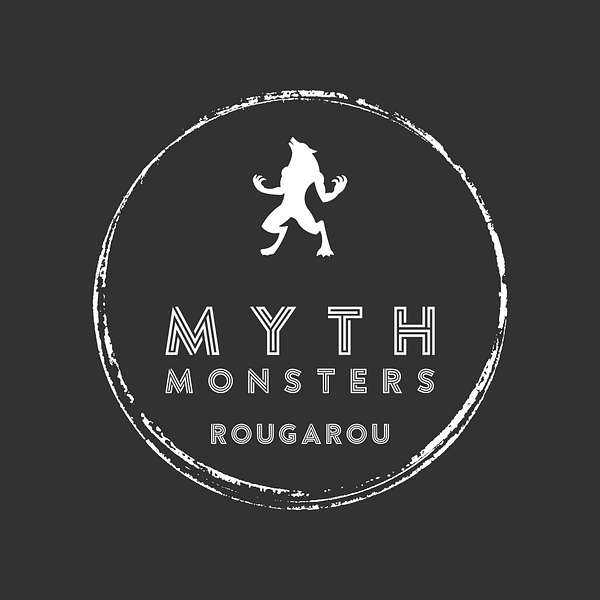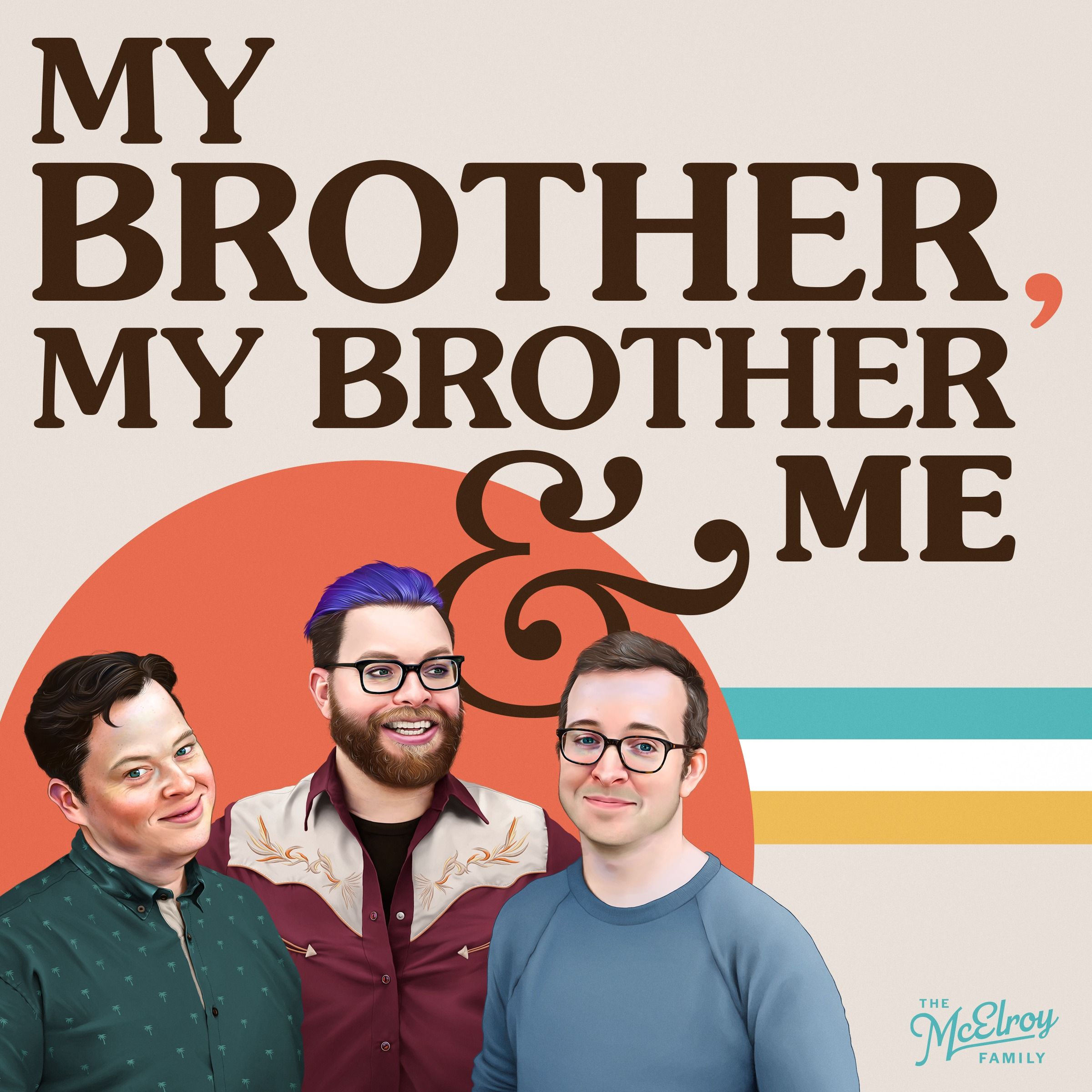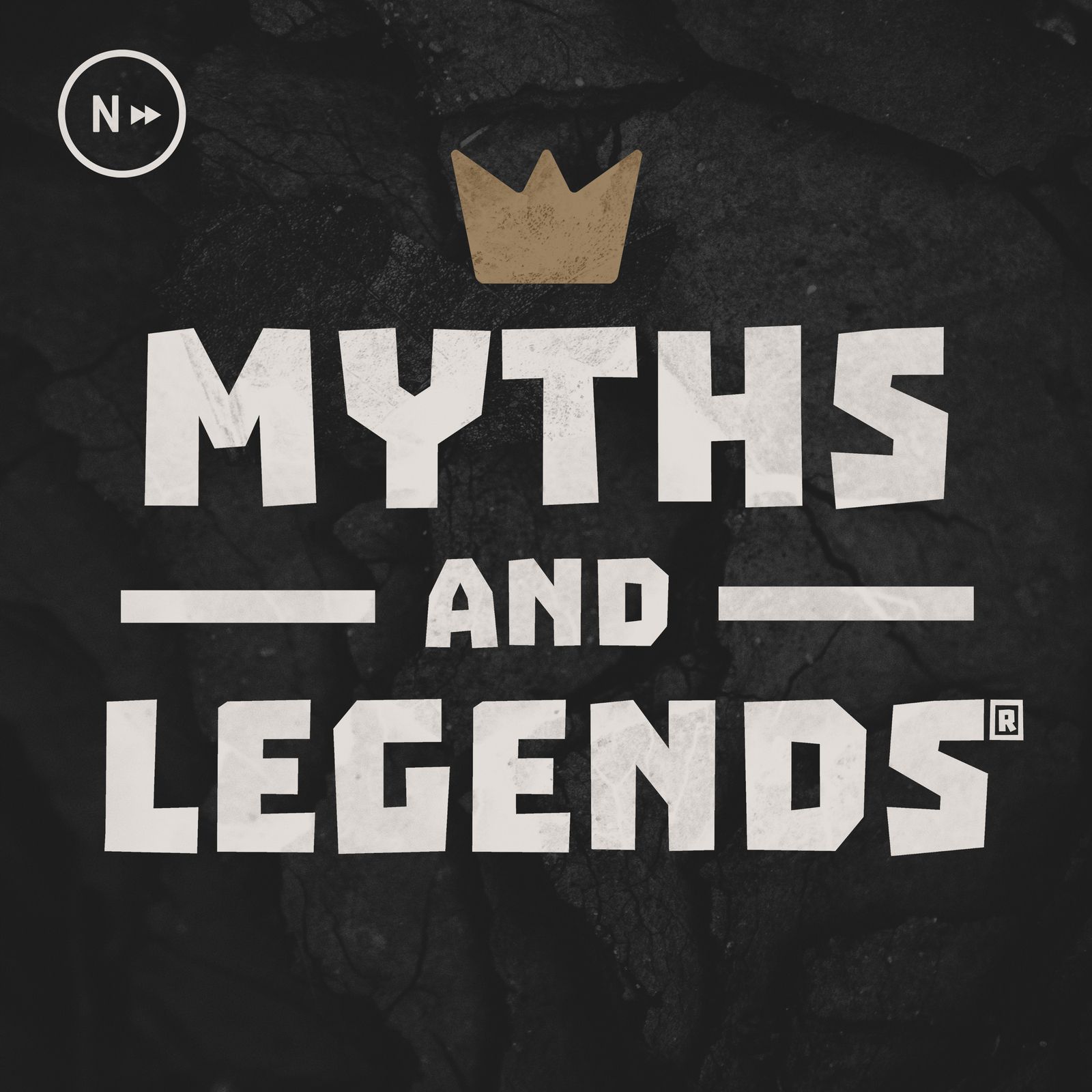
Myth Monsters
A bite sized look into the monsters of global folklore, cryptozoology and mythology with your host, Erin. Jump in and learn about your favourite monsters from Gorgons to Kelpies, to Wendigos to Bigfoot. Stay spooky every Thursday with a new episode with a new monster from another culture. Get in touch on Twitter at @mythmonsterspod
Myth Monsters
Rougarou
For this week's episode, we're heading to the bayous of Louisiana for the terrifying Rougarou! How does this werewolf link to a French legend from the 16th century? Why does it only take 13 objects to stop it in its tracks? Find out this week!
You can find us on:
Social media:
INTRO:
Hello and welcome to Myth Monsters, my name is Erin and I’ll be your host for these little snack bite size podcasts on folklore and mythical monsters from around the world.
These podcasts focus on the actual cryptids, folklore and mythic monsters from global mythology, rather than focusing on full stories of heroes and their big adventures.
I’ll also be dropping in some references that they have to recent culture and where you can see these represented in modern day content so you can learn more, and get as obsessed as I am about these absolute legends of the mythological world.
Back to normal scheduling this week, although I have got a few holidays booked in which I will much better prepare for than last week I promise. It’s starting to brighten up here in the UK, and summer is on its way thank goodness - and this week we’re going to a place well known for its outdoor summer crab boils, gumbos and jambalaya.
DESCRIPTION:
Yes we are heading to the swampy bayous of the US this week and going to Louisiana in the South for the horrifying Rougarou. This was sent in as a suggestion from Jeremy and his wife, who is from Louisiana - so thank you so much for this recommendation!
The Rougarou is described as a shapeshifting werewolf-like creature, who stands at around 6-7 foot tall with a body of a man but the head of either a dog or wolf - however, sometimes you may even get the head of a pig, deer, alligator, rabbit or mosquito. It has glowing red eyes and is covered in thick, usually black fur over its entire body. It stands on two legs like a man usually, however can switch to running on all fours, baring sharp teeth and claws as it chases after its prey.
Speaking of prey, they tend to stick to large animals and humans when they can for just their flesh and we also know that they love killing people, especially Catholics for reasons we’ll get into later.
You might be thinking that maybe they don’t need any other powers to be a myth monster - but these have plenty. They’re immensely fast and strong, just as you imagine a werewolf to be in European cultures but it can also hypnotise people with a glance and paralyse them with fear, but like, literally paralyse them. It can also shapeshift into other animals and other objects to blend into their surroundings.
In terms of their surroundings, they’re nocturnal creatures and so they love the dark, wet and swampy terrain that is common in Louisiana. Rougarou are known for haunting the bayous of New Orleans and south Louisiana and we’ll get more into this culture and the influence on this monster later too.
So how do you become a Rougarou? Usual werewolf stuff innit - but in all seriousness, there are a few ways you could become one. Such as if a witch cursed you or if you committed social taboos or moral codes, or if you broke Lent; one of the Christian festivals of fasting (hence the Catholic preference in their diet). The curse would usually last for 101 days where the person transforms nightly into the monster and hunts through the swamp. Others say that this curse lasts forever and you can never change back into a human form. Also, because it is a curse - it means that if you don’t break it, it would pass down through family trees. Meaning that if your dad was a Rougarou and never got rid of it, you probably would become one too eventually.
There was only one way to break the curse, which was to transfer it to another person by drawing their blood, meaning you could bite, stab or maim the person in any way to get it. If you can’t help your pal who’s become one, the best way to prevent them getting at you would be to kill them by usual werewolf/vampire methods aka cut their head off and set them on fire. You couldn’t tell anyone if you did get infected because according to legend, if you spoke about it - you would die instantly.
OR the other plan is to confuse them because for some reason that is unknown to me, Rougarou can’t count past the number 12, and by laying out 13 objects like pennies or candles that they had to count by compulsion (see usual werewolf/vampire stuff again), they would get super confused and continuously lose track until you could probably just kill it. At that point too, I don’t think it’s gonna go away, so probably just not worth the attempt.
ORIGIN:
Now let’s hop on over to etymology. This week is a really good one because Rougarou, if you didn’t guess, is French. This is because of the heavy French influence in the Louisianan area and it comes from the words loup meaning wolf and garou meaning werewolf. So yes it is another werewolf werewolf name, but in French folklore the loup-garou is a whole other werewolf monster, but we believe that Rougarou is taken from stories of this but changed for the US audience at the time.
Before we kick into history, I hear the non-US people asking, what is the difference between a bayou and a swamp, because we mentioned it earlier. Well I’ll tell you - a bayou is a body of water found in a flat area, and can either be a slow-moving stream or river, or a marshy lake, or wetland. A swamp is an area of land saturated with water at all times, as is a marsh. So basically, bayous can be just really wet, but swamps are water-logged forever.
Bayous are also intrinsically Cajun and Creole, which are two ethnic groups in Louisiana, which are descended from French immigrants - which is where we’ll kick off the history segment.
With this, we must go back to the 1500’s to talk about the French version of this monster. The loup-garou as mentioned previously, was an incredibly similar beast and was commonly used as a scapegoat for crimes such as kidnapping, livestock attacks and burglaries.
The loup-garou were always believed to be lycanthropic, meaning that they were men changing into wolves, and so many people were actually accused of being loup-garous. Unfortunately, this was not the time to be accused of something supernatural in Europe, and lycanthropy trials were actually a thing and people were executed for them in a time of witch hunts and high superstition in a mostly Catholic continent. Because of this super scary thought of werewolves, French parents would tell their children that the loup-garou would get them if they misbehaved - turning them into a popular boogeyman in France.
Now skip ahead to 1682 when Louisiana was founded by French settlers not only from France, but also Canada because the French settled there in 1535. They brought along their own customs, history and of course, folklore - and with them the loup-garou. Overtime, the language developed into what we now know as Cajun and Creole and the loup-garou developed into the Rougarou. This version of the French werewolf actually changed drastically with incorporated elements from the culture around it, such as Native American beliefs in shapeshifters, African American swamp monsters and Catholic teachings of punishment and sin.
The Rougarou is actually most linked to Cajun culture, and they are specifically descended from the French Canadian side, as they settled in Southern Louisiana when they were expelled by the Brits in the 18th century - typical us, I know.
The Cajun people have their own language, traditions, food, culture and mythology but if we’re totalling it down to something outsiders to the culture might know; Mardi Gras, jambalaya, Gambit from the X-Men and jazz are things very often linked to the Cajun and sometimes Creole people, but there is much more than that and the Rougarou is one of them. I could also talk forever about Cajun, Creole and general Louisianan cultures as they are so utterly interesting - but we’ll focus on our monster I guess.
The Rougarou was really used, as most of our bog or swamp monsters are, as cautionary boogeymen - mostly for the safety of children in these treacherous terrains. The area around the bayous is usually incredibly soggy and the water can be deceptively deep and thick with weeds, meaning any strong swimmers might struggle. As well as this, there are alligators in Louisiana, so you really don’t want to fall in as a kid and be a perfect midday snack for a gator. But we also have to take into consideration what every monster is, a way of our ancestors personifying what goes bump in the night. If you can put a face on it, it makes it a lot easier to compute than just nothing, and this was most likely the original origin of most of our monsters, let alone this French werewolf.
Let’s chat about other close monsters though, and of course the big one is werewolves and with that, I mean the European idea of werewolves. The man who howls at the moon every night they transform, looking for a beautiful damsel to steal and tear apart, then look tragically at in the morning with blood soaked human hands. Yes, of course this is a close relative - if not just a French version of the traditional European werewolf. The differences are that this is a curse set on by a witch rather than a bite from another, at least in the first instance and that sometimes this would only last a few days which is pretty good I guess.
Another really fun one is the Beast of Gévaudan, which is another French werewolf that we’ve not covered yet - but hold on. This werewolf literally terrorised a village in France for three years in the 1700’s, and was believed to be a demon of vengeance sent by the exiled Romani people on the people of France who turned them away. People had their throats ripped out and everything, 113 people actually died and I’m not joking - this actually did happen. We’ll do an actual episode on this though, it’s too interesting not to. But it’s a werewolf and it’s French - what more commonalities to the Rougarou do you want people?
There is also a Cajun Bigfoot, also known as La Bete Noire or the Honey Island Swamp Monster, that lives in these same swamps - it’s worth a mention because of the location and we will cover him another time but I also think the name is funny so that’s that.
Lastly, let’s talk about the cultural significance of the Rougarou. It’s an iconic figure in Louisianan culture and is still celebrated to this day with the Rougarou festival in Houma in Louisiana every year. It’s a celebration of Cajun culture with costume contests, haunted tours, food and music - and all of the proceeds go towards preserving Houma itself. There’s a zipline park called Rugaru Adventures in Oklahoma, although it seems to be more Bigfoot themed - but I do appreciate the mythical nod to American monsters, I suppose. There’s also the Rougaroux rum which is made in Louisiana, and they even have a flavour called Rougaroux 13 Pennies, referencing their poor counting skills.
CULTURAL SIGNIFICANCE:
Now let’s move onto modern media, there’s not much for Rougarous within media, but there are a few TV bits that I’ve popped in for them and filled the rest out with Werewolf media because it’s great.
For art, have a look at independent art this week for this monster as there are some really cool bits and nothing that’s really much older than that I’m afraid.
In movies, we have; Van Helsing, Werewolf, Dog Soldiers, Good Manners, Wolves, The Werewolf (1956 & 1913), Werewolf of London, Werewolf of Woodstock, Werewolves on Wheels, Underworld, Twilight, American Werewolf in London, Harry Potter, Hotel Transylvania, Wolfman, Wolfwalkers, 100% Wolf, Bad Moon, The Boy Who Cried Werewolf, Never Cry Werewolf, Nosferatu, Red Riding Hood, Into the Woods, The Forest Hills, Skinwalkers & Trick ’r’ Treat.
For TV, we have; Supernatural, NCIS: New Orleans, Shadow of the Rougarou, True Blood, Teen Wolf, Grimm, The Munsters, Lil Horrors, Sanctuary, Vampire Diaries, What We Do in the Shadows, Young Dracula, Being Human, Buffy the Vampire Slayer, Charmed, Doctor Who, The Dresden Files, X-Files & Wolfblood.
In video games, we have ones such as; Wolf Among Us, Killer Instinct, Harry Potter game series, Bloodborne, Castlevania, League of Legends, Nocturne, Altered Beast, The Legend of Zelda, Pokemon, The Quarry, Sable Man, Shantae, The Sims, Shadow Caster, Darkstalkers, Darkest Dungeon, Diablo 2, Soul Calibur, World of Warcraft, Touhou Project, Wolf Team, Terraria, Werewolf: The Last Warrior, The Wolf and the Waves & Suikoden 2.
My book recommendation this week is for Cajun and Creole Folktales: The French Oral Tradition of South Louisiana by Barry Jean Ancelet or Cajun Folktales by J.J Reneaux and for our monster more specifically and definitely one for kids, Rougarou at Mardi Gras by Vanessa Cano is a fab book.
DO I THINK THEY EXISTED?
Now it’s time for, do I think they existed?
I really want to believe this exists - what a cool monster and honestly, I love the whole traditional monsters in the werewolf and vampire sense. Give me those for a Halloween costume anyday! But the answer to the question is probably no, I am sorry - it’s the same as the normal werewolf belief question and I’m afraid I was team Edward, and even those are a little shaky on the do I believe in them front.
As you know if you’ve been a listener for a while, I love wetlands and swampy monsters and I do think they are naturally creepy places with all the insect sounds and greenery and with this location, you also have alligators and now a werewolf man and a sasquatch. I’m sure there are also more monsters that I’ve not mentioned or found in this part of the woods yet.
I love anything to do with Bayou/Cajun/Creole/Louisianan folklore. I think it's so interesting, especially with all of the immense history within this part of the states that I think sometimes is looked over for cultural stereotypes. And I’m totally guilty of that before I looked more into this - the only thing I knew about this part of the world was Gambit from X-Men and how much I wanted to be called cher and mon ami growing up by a sexy red-eyed superhero who came from the Bayou.
I will say that I did very much enjoy the Louisiana part of Disney World when I went in November last year, and it is the closest I’ve been to the Bayou State - it is definitely a big dream to go there and soak in all that amazing culture, food, marsh and maybe even go hunting for a Rougarou.
But what do you think? Did the Rougarou haunt the swamps of Louisiana? Let me know on Twitter!
OUTRO:
I loved discovering more about this mythos this week and I hope you did too! I thought this one was super interesting and thank you to Jeremy and your lovely wife for the recommendation on this monster, it was a joy to cover and I hope I did the Rougarou justice for you!
Next week, we’re heading over to Ancient Greece and Ancient Egypt to ask a few riddles, like which mythos do they really come from? Ask all that and more with the Sphinx next Thursday!
For now, thank you so much for listening, it’s been an absolute pleasure. If you enjoyed this podcast, please give it a rating on the service you’re listening on - I’ve got the twitter for any questions, or suggestions on what monsters to cover next and I’d love to hear from you. The social media handles for Tiktok, Youtube, Threads and Instagram are mythmonsterspodcast, and twitter is mythmonsterspod. But all of our content can be found at mythmonsters.co.uk, including some very cool merchandise - you can also find us on Goodpods, Buymeacoffee and Patreon if you want to help me fund the podcast too.
Come join the fun though and share this with your pals, they might love me as much as you do.
But for now, stay spooky and I’ll see you later babes.
Podcasts we love
Check out these other fine podcasts recommended by us, not an algorithm.

FolkLands
Tim Downie, Justin Chubb
Chatsunami
Satsunami
The Howdy Beans Podcast!
Luke The Elder Bean!
My Brother, My Brother And Me
The McElroys
Myths and Legends
Jason Weiser, Carissa Weiser, Nextpod
Lore
Aaron Mahnke
Exploration: Dreamland
Exploration: Dreamland
The Neatcast
Jeremy, Zack, Mike
Effin' Cultured
Bobby, Griff, and The Rik
